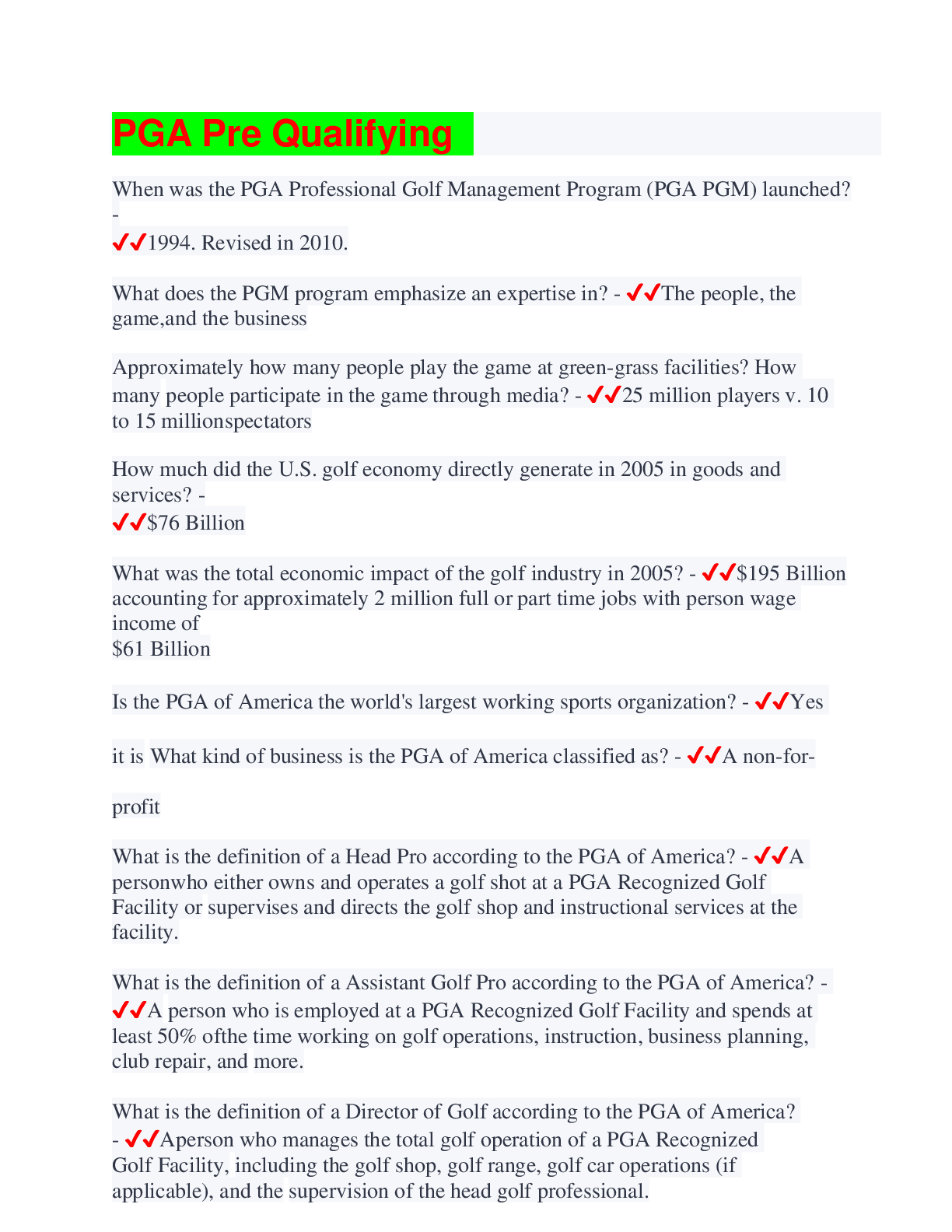PLT - Early Childhood Exam 92 Questions with Answers Latest,100% CORRECT
Document Content and Description Below
PLT - Early Childhood Exam 92 Questions with Answers Latest Cooperative learning - CORRECT ANSWER method of instruction that has students working together with a common goal direct instruction... - CORRECT ANSWER teacher based/centered; scripted lesson plans; students know goals; assessment and feedback is frequent; teach content and review learning discovery learning - CORRECT ANSWER inquiry based instruction; constructivist learning; Piaget, Bruner, Papert; problem-solving situations interdisciplinary instruction - CORRECT ANSWER cross-curricular unit concept mapping - CORRECT ANSWER graphic organizer; diagram showing relationships among concepts; arrows to each concept inquiry method - CORRECT ANSWER student-centered learning method of education focuses on asking questions; teachers should not give a direct answer but rather encourage further questioning theorists - CORRECT ANSWER Albert Bandura, Jerome Bruner, John Dewey, Jean Piaget, Lve Vygotsky, Howard Gardner, Abraham Maslow, B.F. Skinner Albert Bandura - CORRECT ANSWER social development; social learning theory (children learn new behaviors from observing other people); intrinsic reinforcements (pride, satisfaction, accomplishment) could also lead to learning Lev Vygotsky - CORRECT ANSWER children learn actively through hands-on experiences; sociocultural theory (parents, caregivers, peers, and the culture at large were responsible for the development of higher order functions) B.F. Skinner - CORRECT ANSWER behaviorism; operant conditioning theory (children's behavior can be increased based on the presentation of reinforcers and decreased through punishment); imitation of observational learning increases the chances that children will learn new behaviors (continuation of Bandura's social learning theory) Jean Piaget - CORRECT ANSWER cognitive-developmental theory (stages of development); reasoning deepens in children as they grow; engagement in the physical and social world enhances development; conceptual change occurs through assimilation and accommodation Jerome Bruner - CORRECT ANSWER believed that discovery learning will help students think for themselves and discover how knowledge is constructed John Dewey - CORRECT ANSWER American educator who believed in "learning by doing" that education for life should be a primary goal Howard Gardner - CORRECT ANSWER theory of multiple intelligences Abraham Maslow - CORRECT ANSWER humanistic theorist most famous for the development of the hierarchies of needs constructivism - CORRECT ANSWER learning theory; construct understanding through reflection of experience Zone of Proximal Development - CORRECT ANSWER the difference between what a child can do with help and what a child can do without any help or guidance Bloom's Taxonomy - CORRECT ANSWER cognitive learning (intellectual skills), psychomotor learning skill, affective learning (attitude of learning) metacognition - CORRECT ANSWER can explain his/her own learning processes and talk about strategies used to gain knowledge schemata - CORRECT ANSWER association of new information with old information transfer - CORRECT ANSWER applying an old lesson to a new lesson; transform lesson extrinsic motivation - CORRECT ANSWER reward-type motivations for learning intrinsic motivation - CORRECT ANSWER reward within; ex. pride, achievement, etc. readiness - CORRECT ANSWER a context within which a student's more basic needs (sleep, safety, love, etc.) are met and the student is cognitively ready for developmentally appropriate problem-solving and learning scaffolding - CORRECT ANSWER instructional supports provided to a student by an adult or more capable peer in learning situations; more capable becomes, the less scaffolding needed Erik Erikson - CORRECT ANSWER "8 stages of human development" based on conflict in life 8 Stages of Human Development - CORRECT ANSWER infancy, toddler, early childhood, elementary/middle, adolescence, young adult, middle adult, late adult Carol Gilligan - CORRECT ANSWER "stages of ethics of care"; feministic stages of women- pre-conventional (individual; survival), conventional (self-sacrifices; goodness), post conventional (principal or non-violence) Lawrence Kohlberg - CORRECT ANSWER "Theory of Moral Development" 1. pre-conventional (obedience and punishment) 2. pre-conventional (individualism; not just one right view) 3. conventional (people should live up to moral standard) 4. conventional (law/order- rules of society) 5. post-conventional (social contract) 6. post-conventional (principled conscience- working toward concept of good society) domains - CORRECT ANSWER cognitive, affective, psychomotor cognitive domain - CORRECT ANSWER knowledge, comprehension, application, analysis, syntheses, evaluation affective domain - CORRECT ANSWER receiving, responding, valuing, organizations, characterization psychomotor domain - CORRECT ANSWER perception, set, guided response, mechanism, complex overt response, adaptations, origination learning styles - CORRECT ANSWER visual, auditory, tactile multiple intelligences - CORRECT ANSWER 1. verbal/linguistic 2. intrapersonal 3. interpersonal 4. naturalist 5. music rhythmic 6. bodily/kinesthetic 7. visual/spatial 8. logical/mathematical verbal/linguistic - CORRECT ANSWER words and language; thinks in words; loves reading, writing, and telling stories; plays word games; learns with language intrapersonal - CORRECT ANSWER relates to inner states of being, self-relfection, metacognition, and awareness of spiritual realities interpersonal - CORRECT ANSWER operates primarily through person to person relationships and communication naturalist - CORRECT ANSWER deals with the recognition appreciation, and understanding of the natural world music rhythmic - CORRECT ANSWER based on the recognition of tonal patterns, including various environmental sounds, and on a sensitivity to rhythm and beats bodily/kinesthetic - CORRECT ANSWER related to physical movement and the knowings and wisdom of the body visual/spatial - CORRECT ANSWER relies on the sense of sight and being able to visualize an object; ability to create internal mental images and pictures logical mathematical - CORRECT ANSWER "scientific thinking"; inductive reasoning/thinking; numbers and the recognition of abstract patterns Americans with Disabilities Act (ADA) - CORRECT ANSWER a federal law that prohibits discrimination on the basis of a person's disability for all services, programs, and activities provided or made available by state and local governments; not dependent on the receipt of federal funds Individuals with Disabilities Education Act (IDEA) - CORRECT ANSWER a federal statute made up of several grant programs to states in educating students with disabilities; specifically lists types to disabilities and conditions that render a child entitled to special education Section 504 of the Rehabilitation Act - CORRECT ANSWER civil rights law prohibiting discrimination against individuals with disabilities by federally assisted programs or activities; eligibility for protection under this act is not restricted to school-age children; covers individuals from birth to death differentiated instructed - CORRECT ANSWER a flexible approach to teaching; a teacher plans and implements varied approaches to teaching content, process, and product in an effort to respond to student differences in readiness, interests, and learning needs alternative assessments - CORRECT ANSWER assessment of student progress through non-traditional testing measures; ex. portfolios, checklists, conferences, etc. testing modifications - CORRECT ANSWER desirable differentiation of assessment for students who qualify operant conditioning - CORRECT ANSWER Skinner's theory based on the idea that learning is a function of change and observable behavior; behavior changes in reaction to a reward demonstrations - CORRECT ANSWER showing a student what to do mnemonics - CORRECT ANSWER a memory aid device often visual cues or rhyme/songs field trips - CORRECT ANSWER an excursion that provides students with an opportunity to gain deeper meaning about a concept through a hands on experience independent study - CORRECT ANSWER a chance for a student to direct his/her own learning without a teacher's guidance inquiry method - CORRECT ANSWER students explore the world in an effort to help them discover meaning achievement tests - CORRECT ANSWER a test designed to asses what a person has learned anecdotal notes/records - CORRECT ANSWER a teacher's written notes on a student's progress aptitude tests - CORRECT ANSWER a standardized test that measures a student's ability to acquire knowledge criterion-referenced test - CORRECT ANSWER measures how well the student knew the test content norm referenced test - CORRECT ANSWER AKA: standardized tests; test a student's performance in relation to another group analytical scoring - CORRECT ANSWER scoring something based on your analysis of it; using a rubric grade equivalent score - CORRECT ANSWER demonstrates the grade year and month that correlates to a student's score; ex. 5.1 = first month of 5th grade holistic scoring - CORRECT ANSWER used a general description of the response to score items percentile rank - CORRECT ANSWER shows the percentage of students who scored higher or lower than the student raw score - CORRECT ANSWER the number of correct answers on a test formative assessment - CORRECT ANSWER designed to provide feedback during instruction to allow the teacher to adjust instruction to address a need summative assessment - CORRECT ANSWER an assessment given at the end of a lesson to determine or judge effectiveness and student skills diagnostic assessment - CORRECT ANSWER a test given before instruction to detect instruction to detect the presence or absence of prerequisites skills simulation - CORRECT ANSWER a method where a teacher creates an immersion setting for the content being studied project-based learning - CORRECT ANSWER an in-depth look at a topic or problem discussion - CORRECT ANSWER an instructional technique where students talk about content cooperative learning - CORRECT ANSWER students working together to solve problems or achieve goals; think-pair-share, jigsaw, etc. mastery learning - CORRECT ANSWER teacher uses a group-based teacher-centered instructional approach to provide learning conditions for all students to achieve mastery of assigned information questioning - CORRECT ANSWER 1. knowledge (who, what, where) 2. comprehension (interpret, retell, organize) 3. application (subdividing information and putting it back together) 4. synthesis (infer an idea) 5. evaluation (making a value decision) **Bloom's Taxonomy discovery learning - CORRECT ANSWER foster inquiry rather than didactic (lecture) methods for learning (asking questions and hypothesize) play - CORRECT ANSWER child's work -stimulates, rewards, observes, explores, models, hypothesizes, discover behavioral objectives (affective, cognitive, and psychomotor) - CORRECT ANSWER focus observable behaviors and focus on cognitive objectives state and local curriculum frameworks - CORRECT ANSWER list the broad goals of a school district, state, or school and provide subject-specific outlines of course content, standards, and performance expectations emergent curriculum - CORRECT ANSWER interests of the children whole-group discussion - CORRECT ANSWER students work as a class to read, discuss, or solve problems - not to be used all the time journals - CORRECT ANSWER like authentic assessments; understanding of key concepts or his/her ability to communicate ideas in writing performance assessments - CORRECT ANSWER student must perform a task or generate his/her own response during assessment portfolios - CORRECT ANSWER collection of products that reflect progress in a content area self-evaluations - CORRECT ANSWER what the student feels is her/his area of weakness or strength mean, median, and mode - CORRECT ANSWER mean = average median = midpoint mode = most common reliability - CORRECT ANSWER extent to which an assessment is consistent with its measures rubrics - CORRECT ANSWER scoring guide used in objective assignments scaled score - CORRECT ANSWER based on mathematical transformation of a raw score standard deviation - CORRECT ANSWER helpful for teachers to see that over all student motivation is very high or very low stanines - CORRECT ANSWER derived from STANdard NINEs; based on 9-point standard scale with a mean of five validity - CORRECT ANSWER test is found to be valid if it measures what it was designed to measure effective verbal and non verbal communication techniques - CORRECT ANSWER - setting clear expectations - providing clear directions - break down complex tasks - signal transitions - explicit teaching - highlight key information - gestures and eye contact - with-it-ness - persona space - noise level [Show More]
Last updated: 2 years ago
Preview 1 out of 10 pages
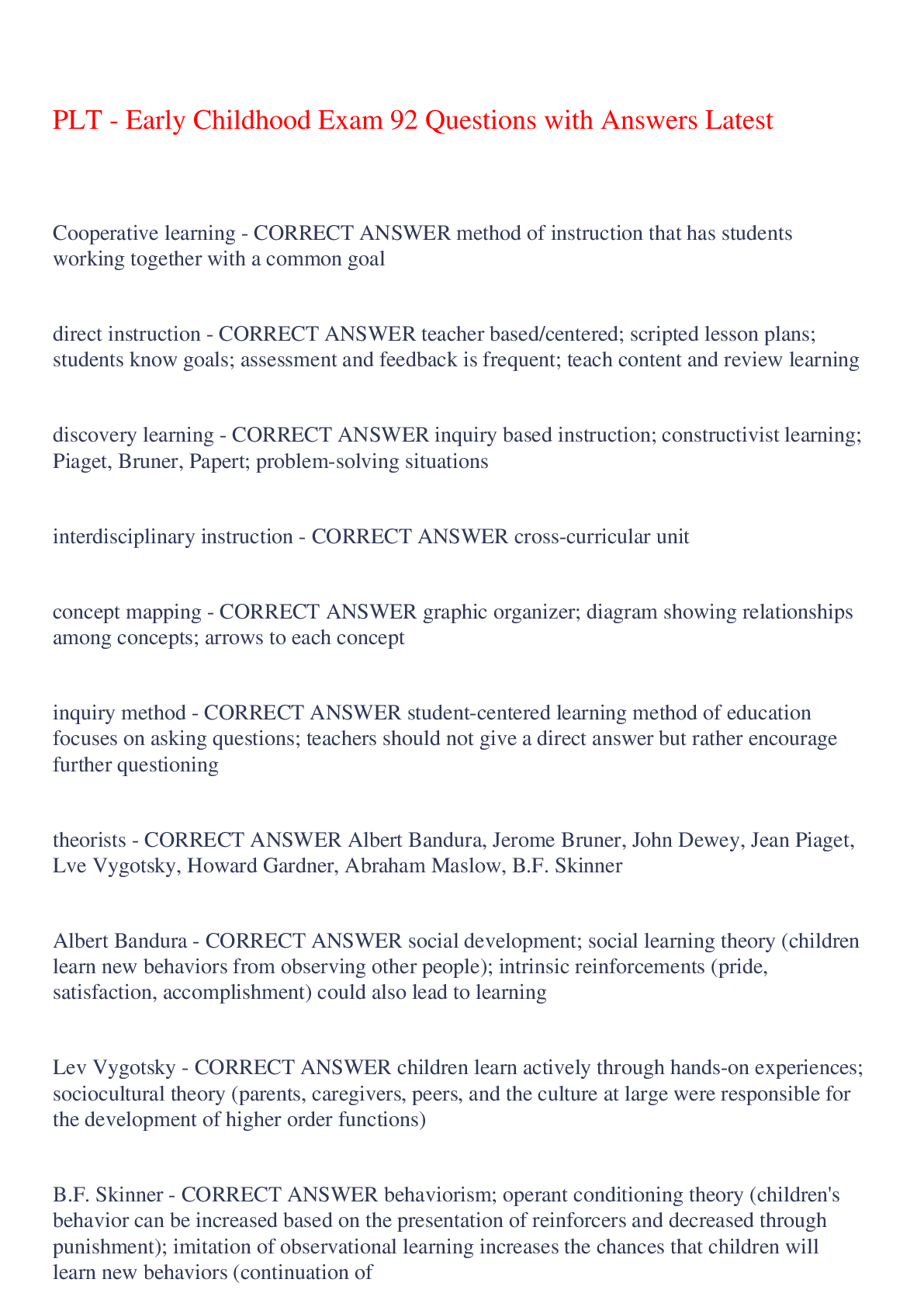
Buy this document to get the full access instantly
Instant Download Access after purchase
Buy NowInstant download
We Accept:

Reviews( 0 )
$9.00
Can't find what you want? Try our AI powered Search
Document information
Connected school, study & course
About the document
Uploaded On
Apr 29, 2023
Number of pages
10
Written in
Additional information
This document has been written for:
Uploaded
Apr 29, 2023
Downloads
0
Views
89



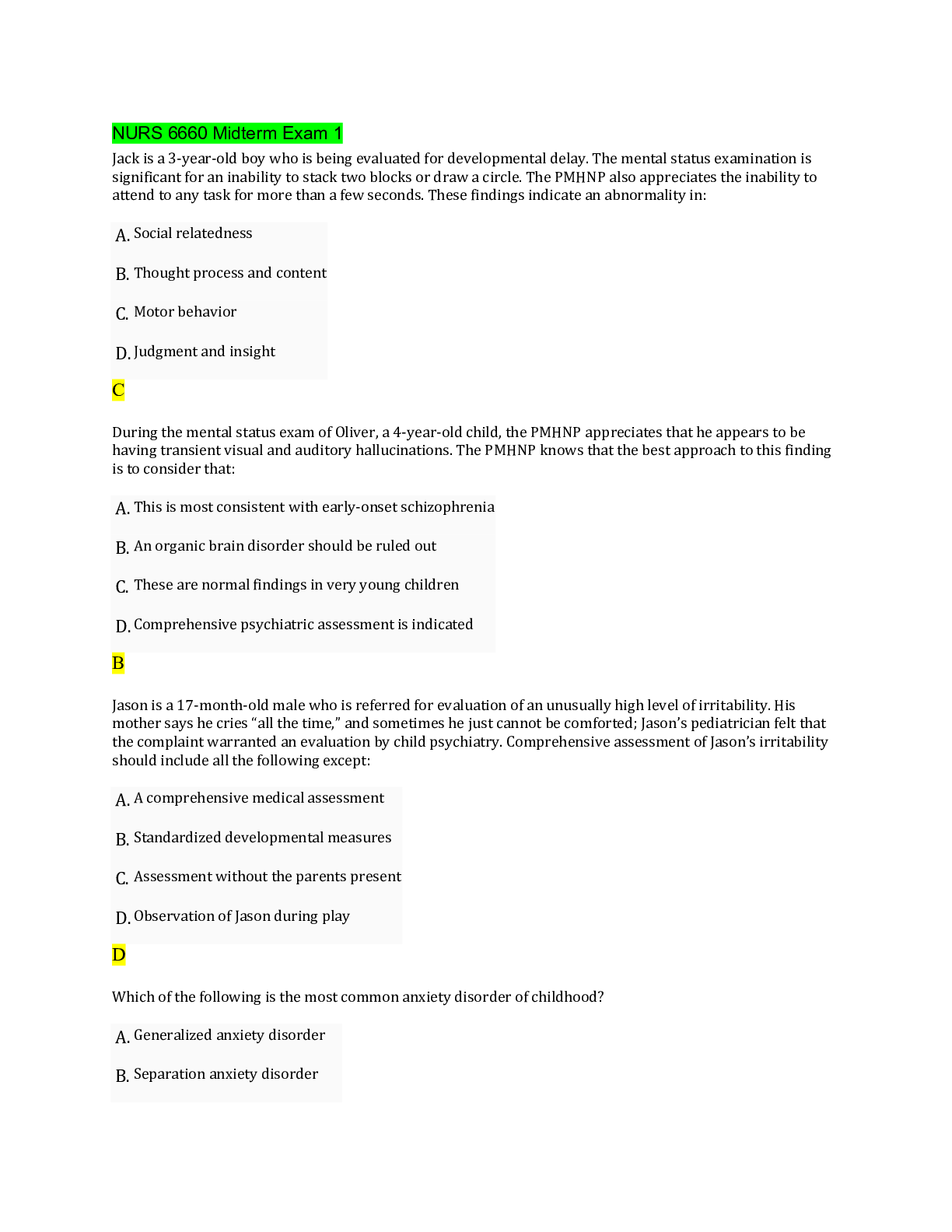
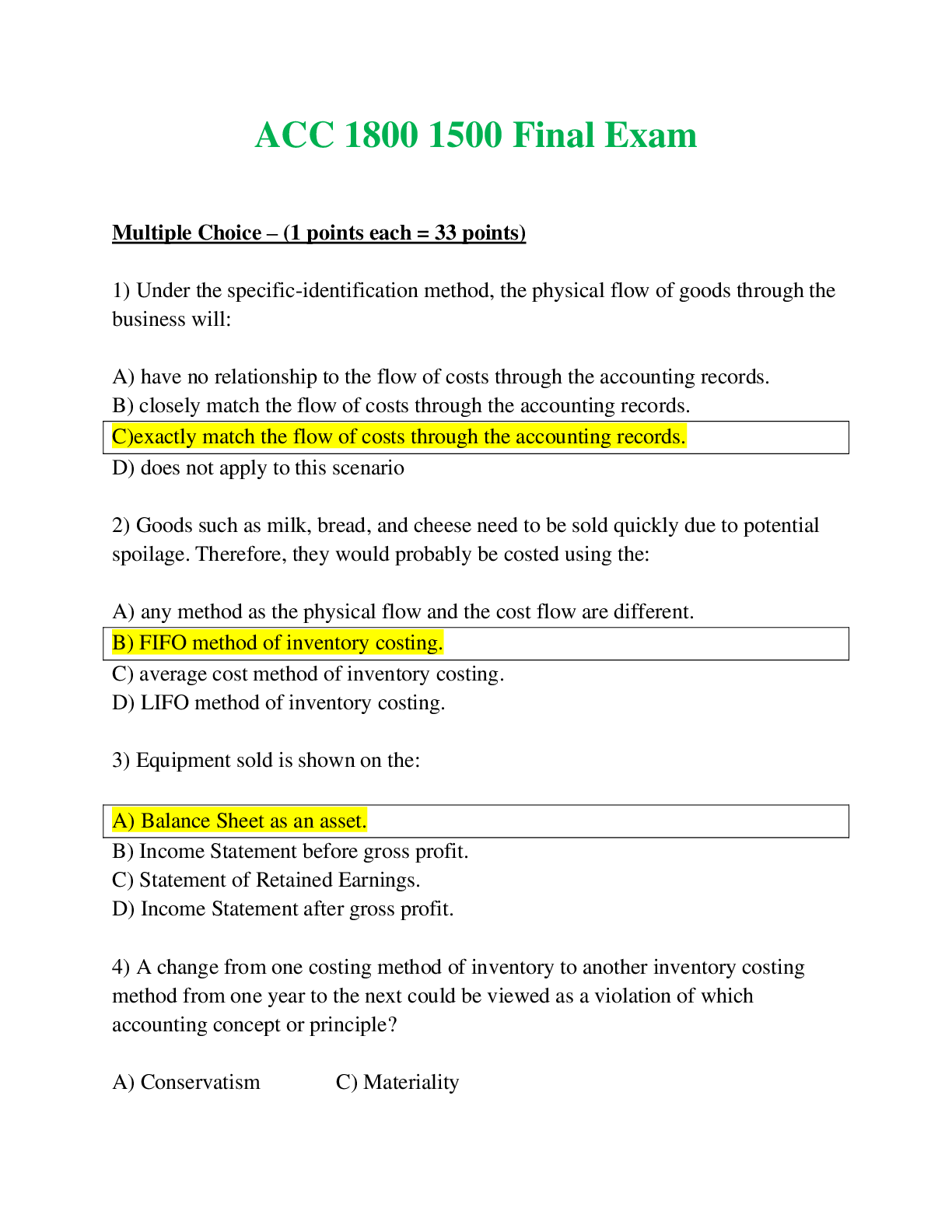

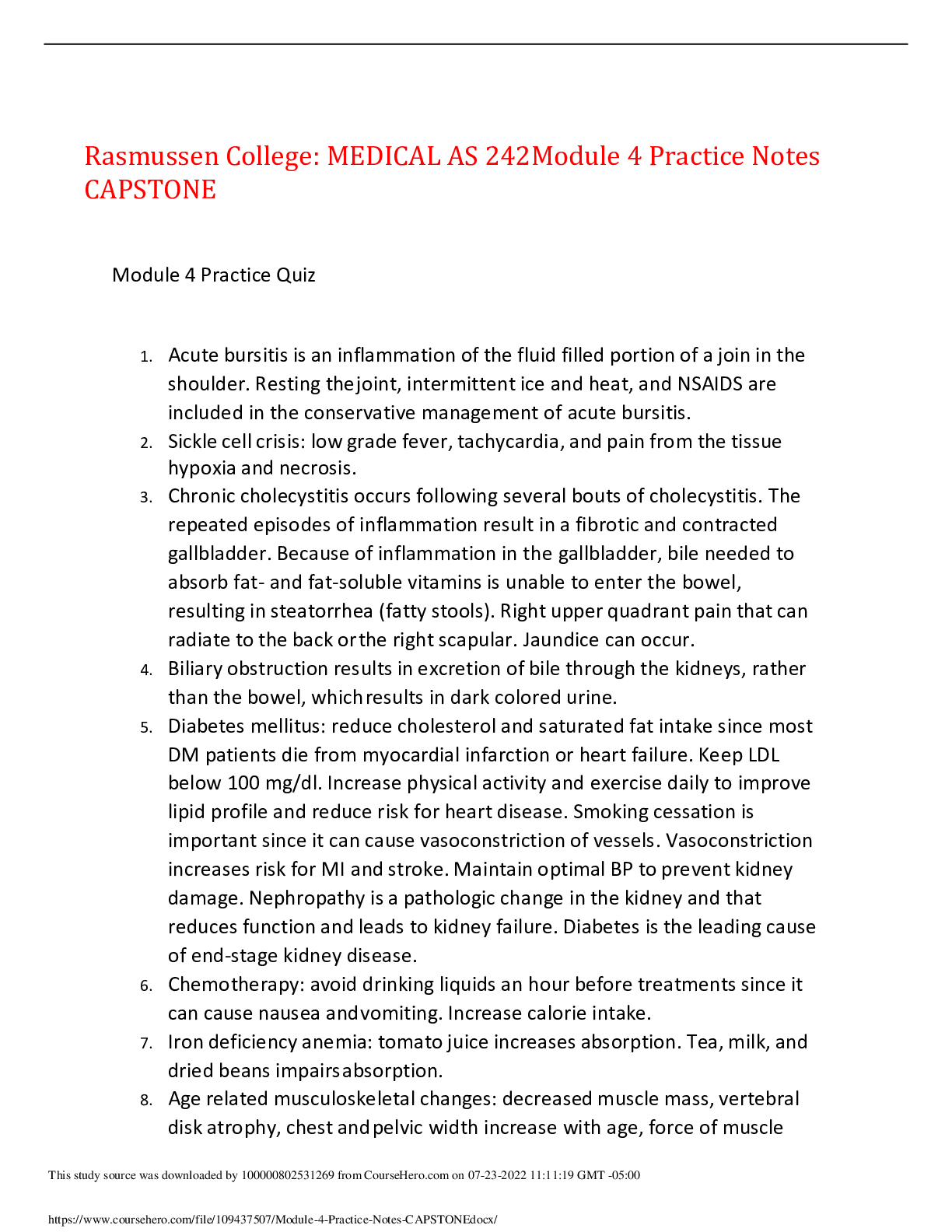
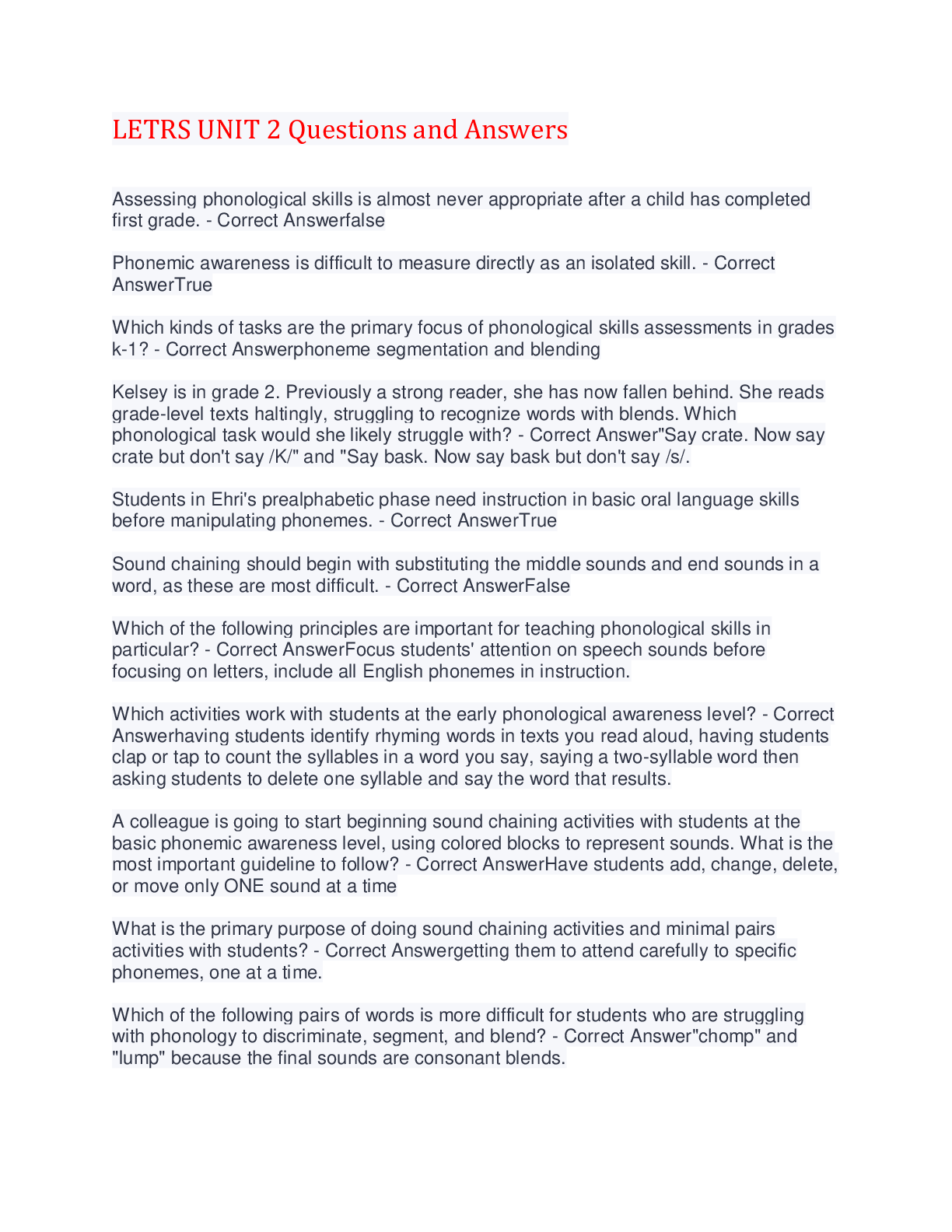
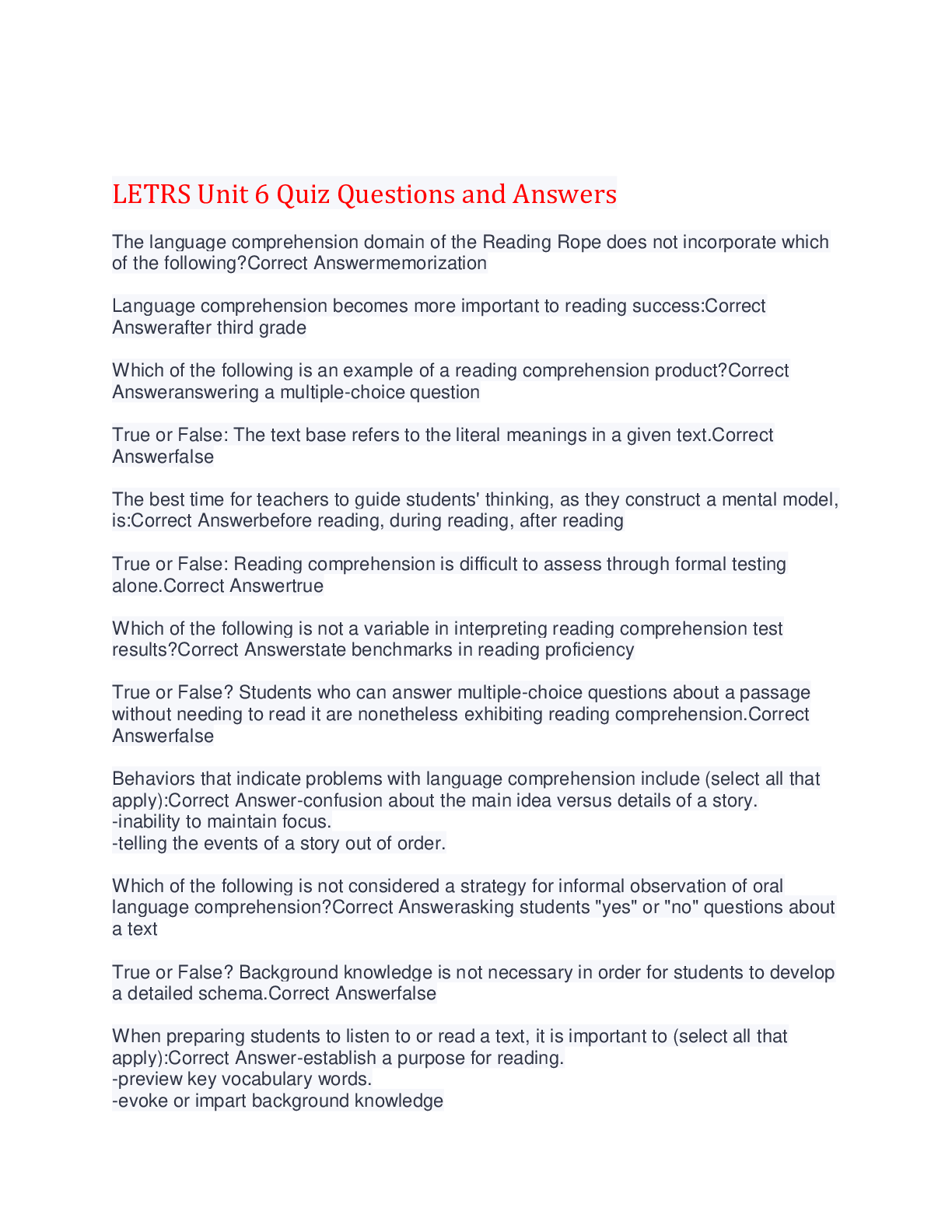
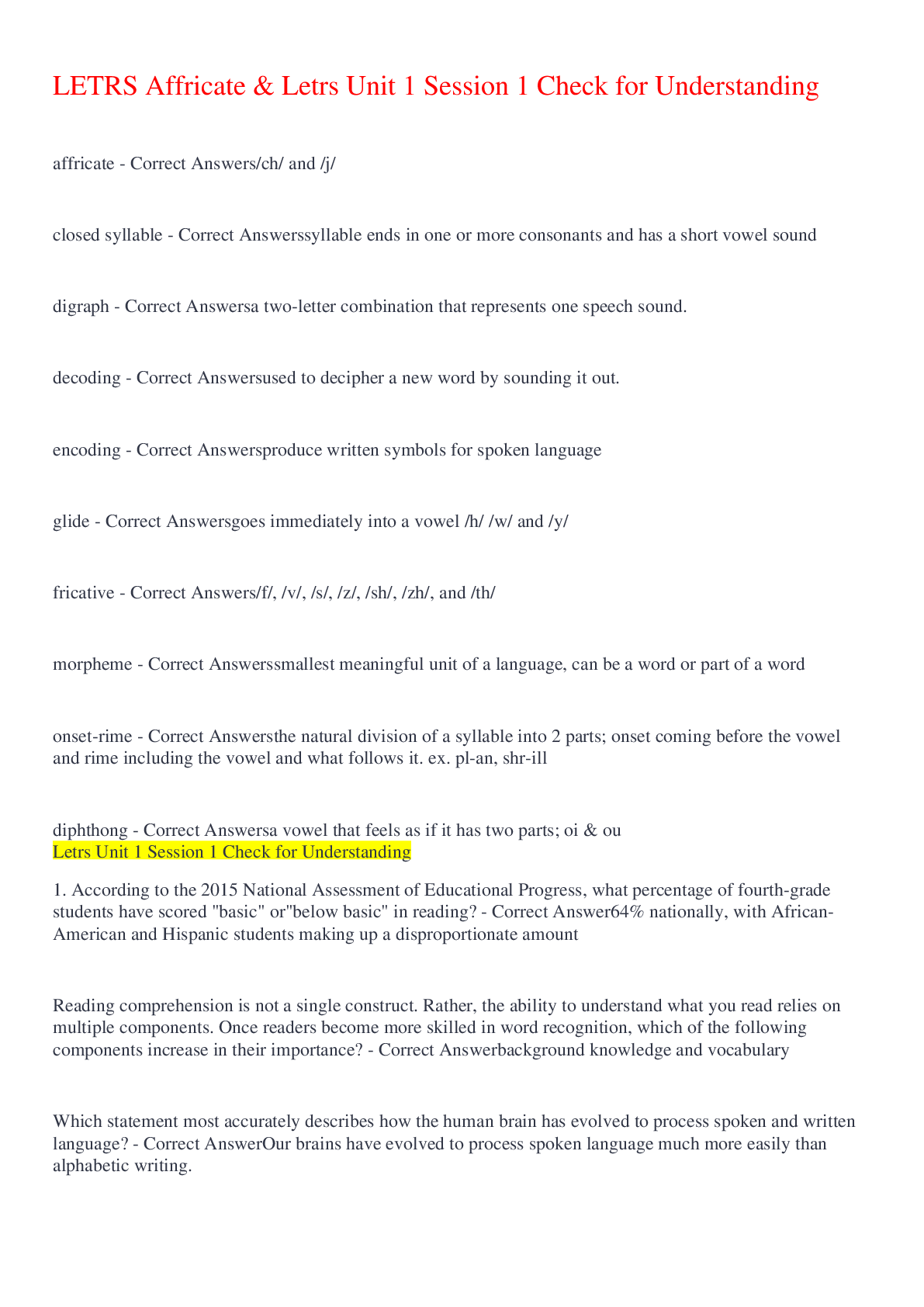

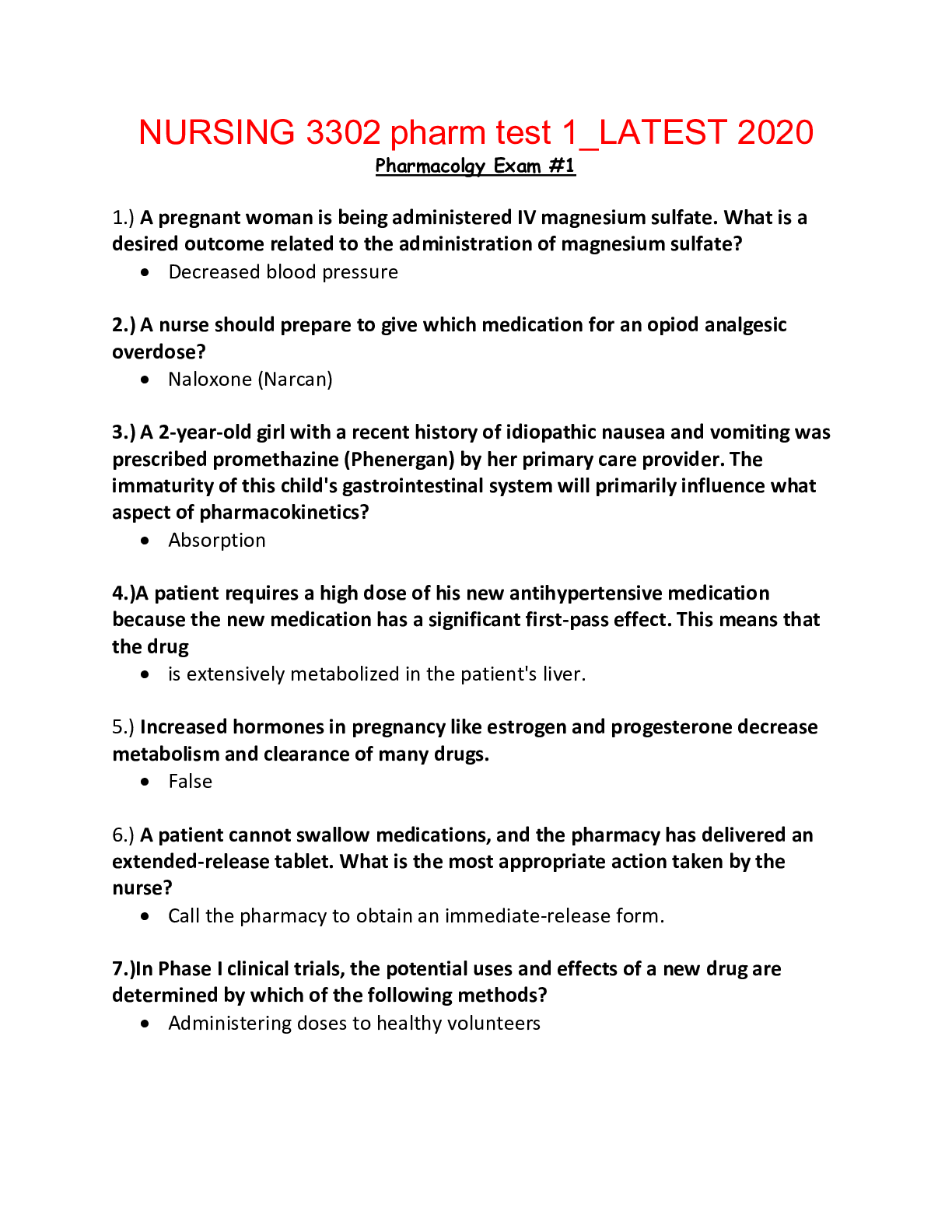
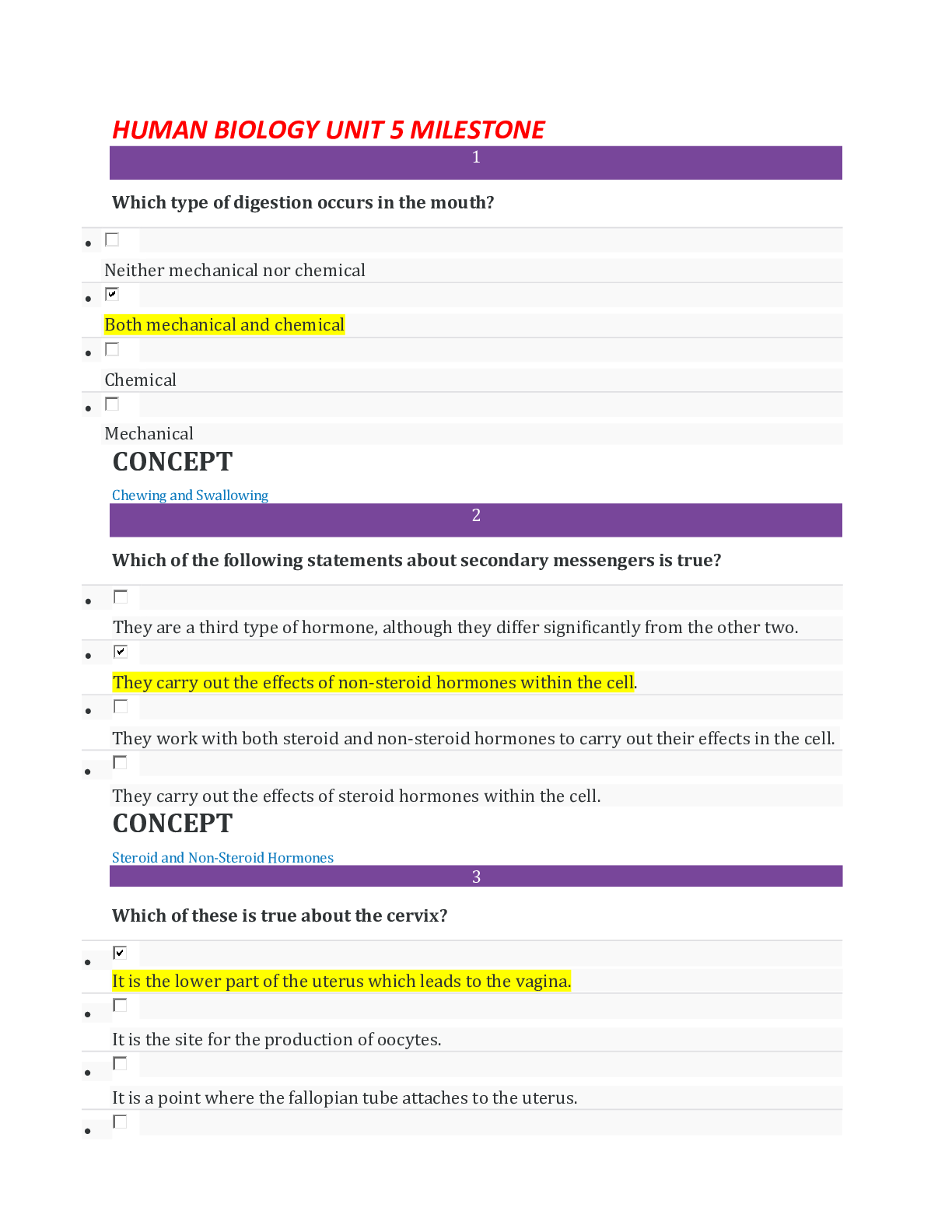
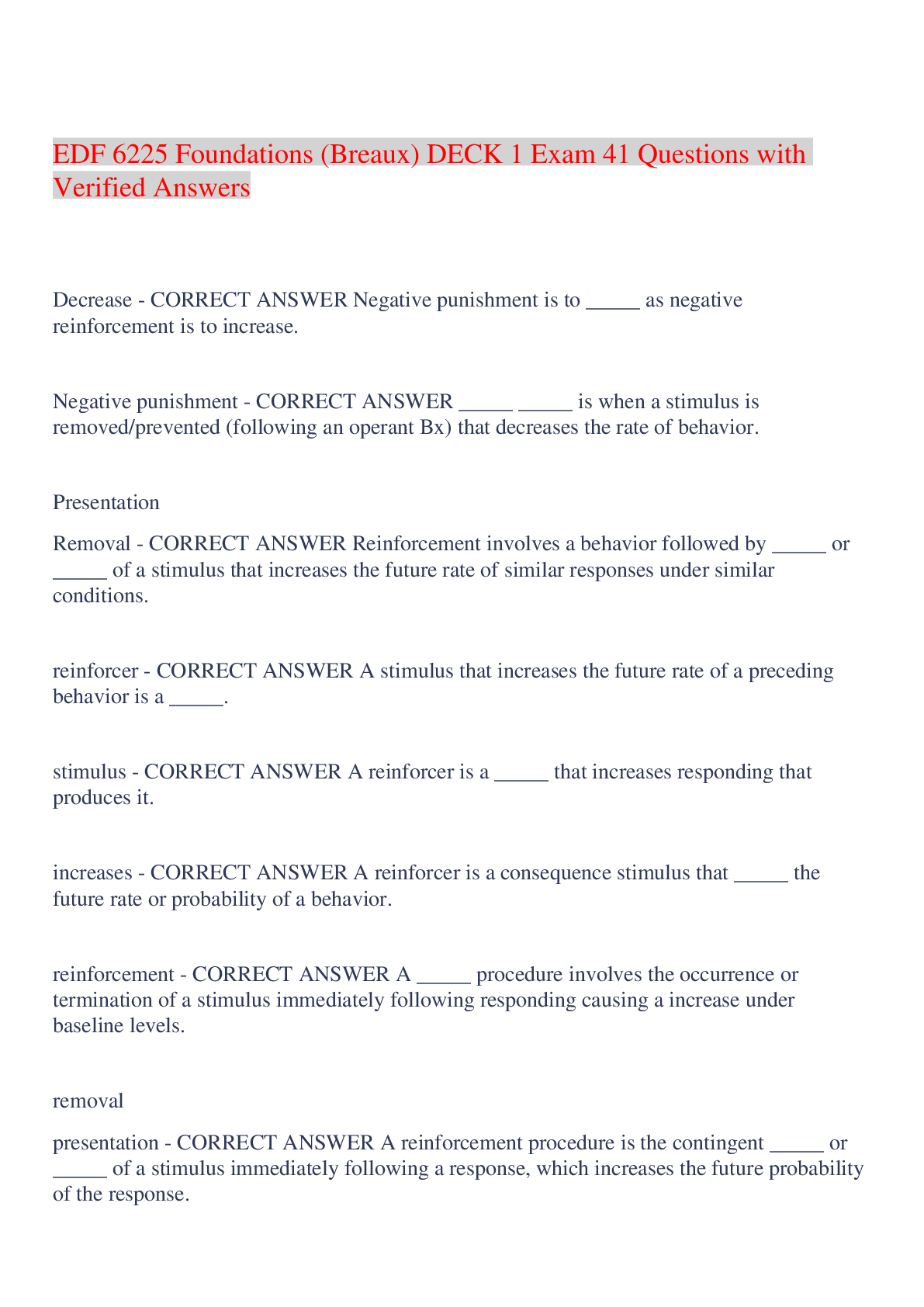

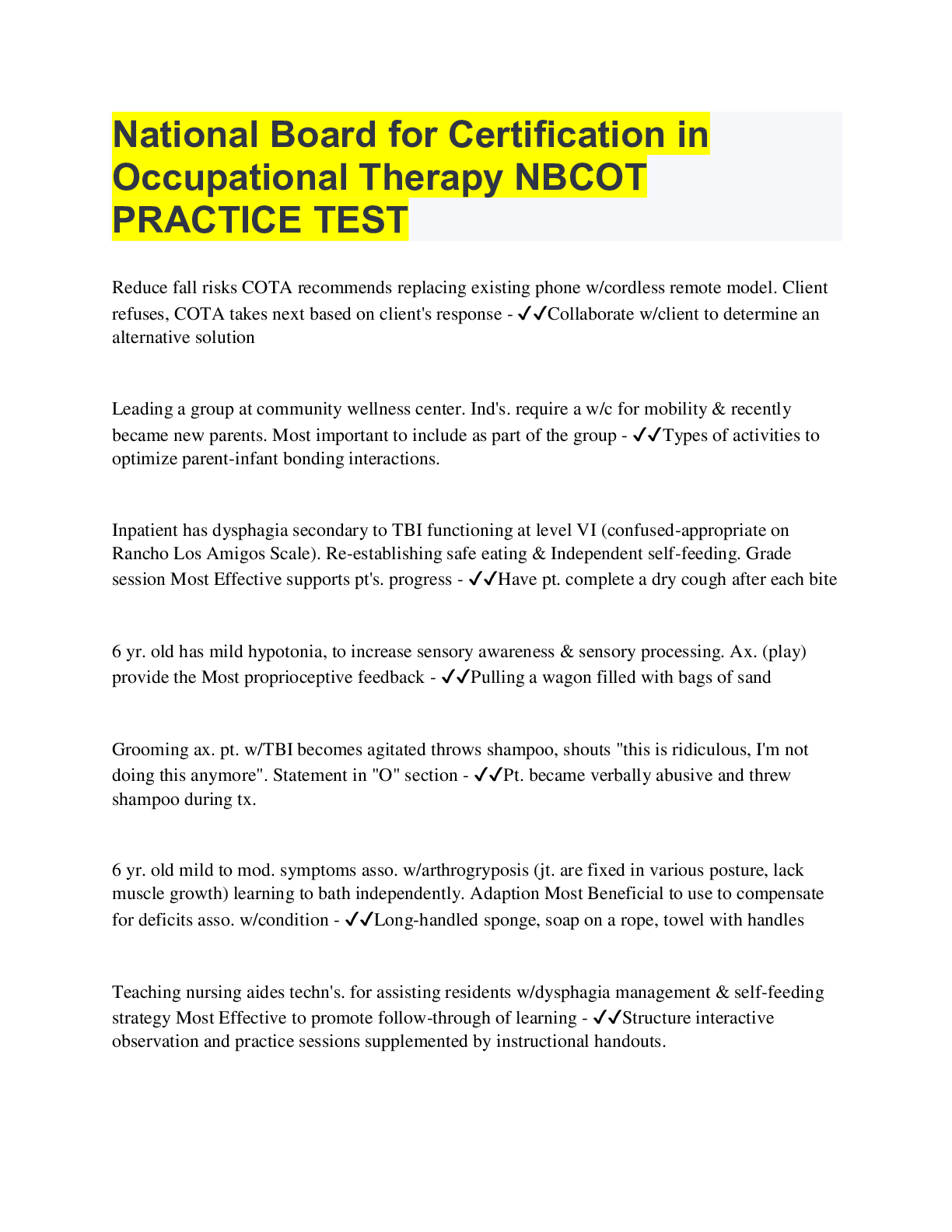
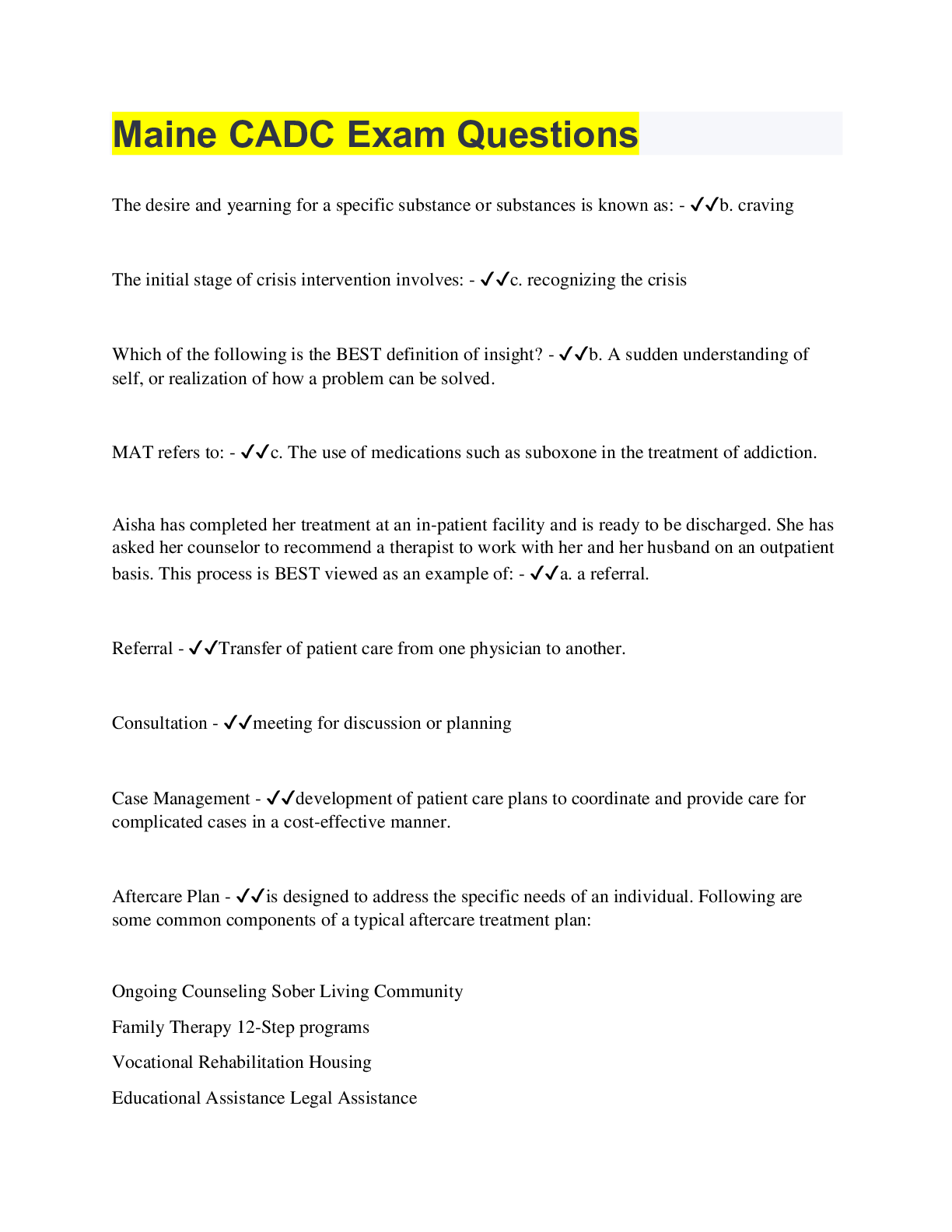
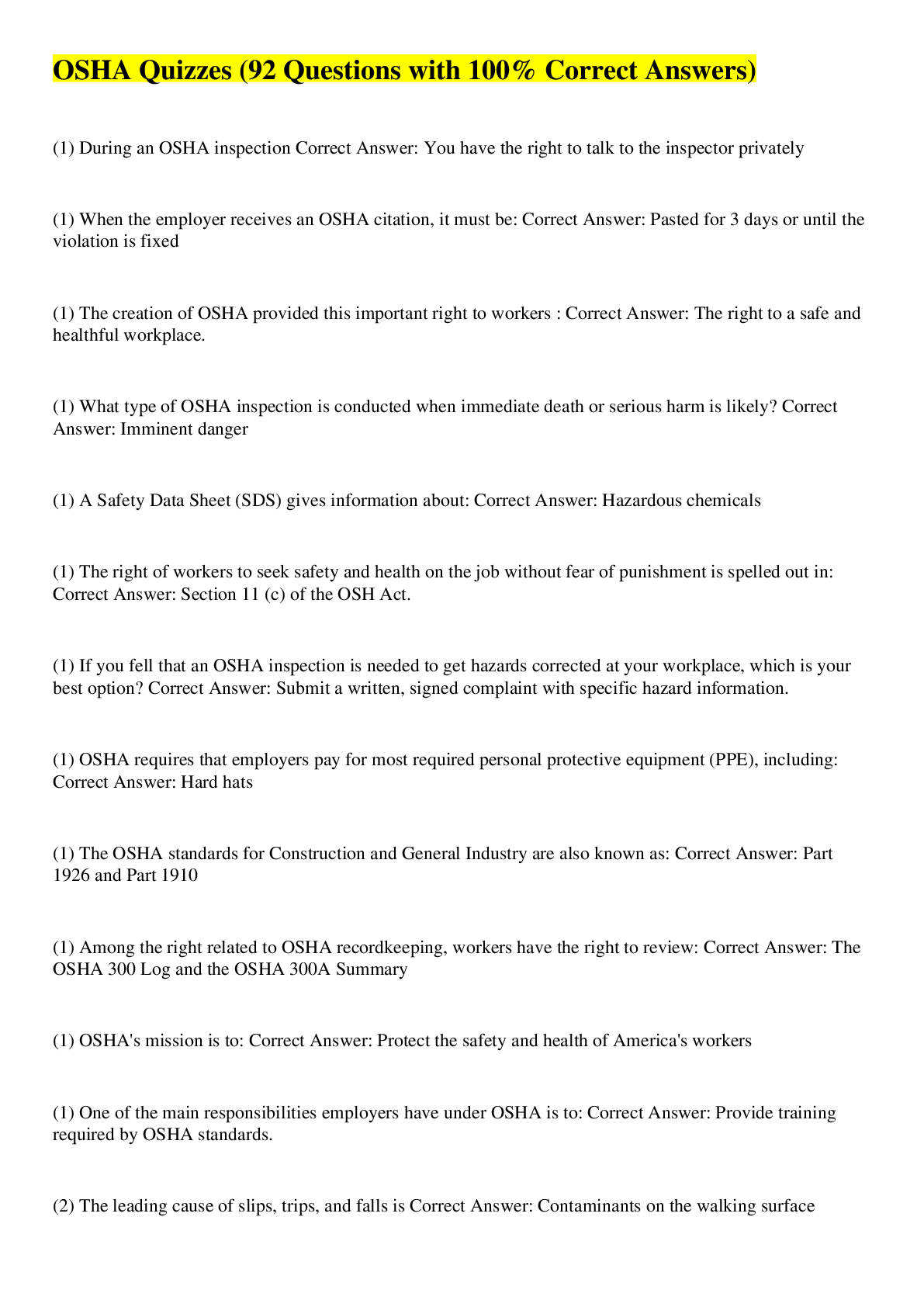
.png)



